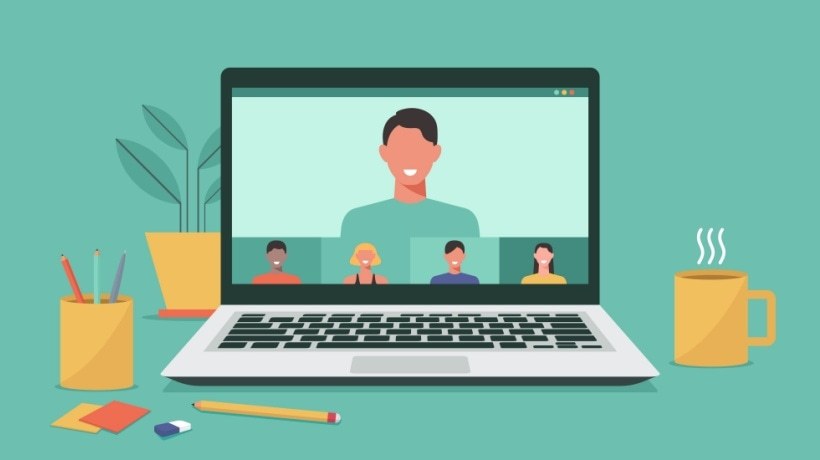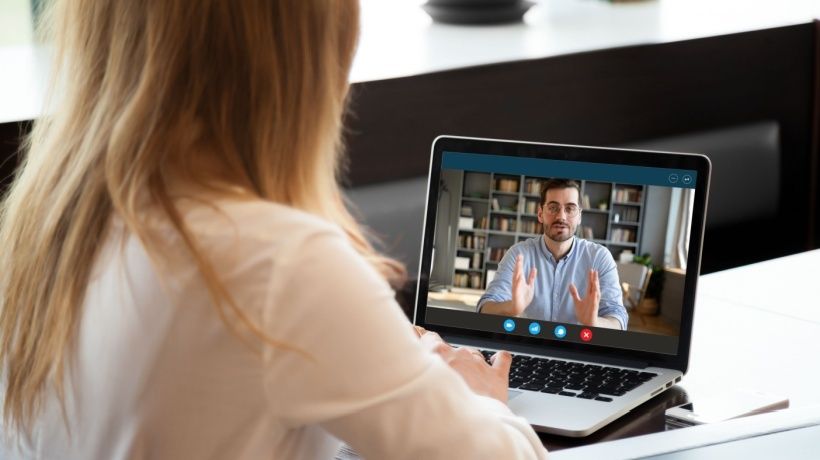Create Webinars That Educate, Engage, And Convert
Educational marketing has become a cornerstone for building trust and long-term customer relationships. By prioritizing informative content over direct sales pitches, businesses can engage audiences more effectively. The webinar software market alone was valued at $9.91 billion in 2025, with projections showing growth to $29.39 billion by 2034 at a compound annual growth rate of 12.68%. This explosive growth reflects a fundamental shift in how organizations approach knowledge sharing and professional development in our increasingly connected world.
In today's competitive digital landscape, businesses and educators who fail to leverage this powerful medium risk falling behind their more innovative counterparts. With 95% of businesses considering webinars essential to their marketing strategy and over 70% of marketers agreeing that webinars deliver the highest quality leads, the ability to create engaging educational experiences directly impacts professional success, brand authority, and revenue generation. Hosting educational webinars uniquely combines the reach of digital platforms with the trust-building power of direct interaction, creating unprecedented opportunities for knowledge transfer and relationship building.
This comprehensive article reveals the strategic frameworks and practical techniques that transform ordinary presentations into compelling educational webinar experiences that engage, educate, and convert audiences. From understanding the fundamental differences between educational webinars and traditional online courses to mastering advanced promotion strategies that maximize attendance rates, each section builds upon proven methodologies used by industry leaders.
In this article, you'll find...
- What Is An Educational Webinar? Definition And Benefits
- How To Plan Your Educational Webinar
- Best Educational Webinar Platforms And Setup
- Creating Educational Content That Engages
- Educational Webinar Marketing And Promotion
- Hosting Your Educational Webinar Successfully
What Is An Educational Webinar? Definition And Benefits
An educational webinar is a live online presentation designed specifically to teach and inform audiences through interactive web-based seminars. These sessions combine the reach of digital platforms with the engagement of face-to-face learning. They create virtual classrooms where participants can learn, ask questions, and collaborate in real time.
The format allows instructors to present complex information while maintaining direct contact with their audience. Interactive elements like polls, Q&A sessions, and live demonstrations keep participants actively involved. This engagement leads to better knowledge retention and practical application of learned concepts.
Educational Webinar Vs. Traditional Online Courses
Traditional online courses rely on prerecorded content that students consume at their own pace. Educational webinars offer immediate interaction between instructors and participants during live sessions. This real-time format enables instant clarification of complex topics and spontaneous discussions.
The live nature creates a sense of community that recorded content cannot replicate. Participants feel more connected when they can ask questions and receive immediate responses. This synchronous learning experience builds stronger relationships between educators and students, leading to more effective knowledge transfer.
Why Educational Webinars Drive Higher Engagement Rates
Educational webinars consistently achieve superior engagement rates compared to other digital learning formats. The interactive elements like live polls, real-time Q&A, and demonstrations keep participants actively involved throughout the session. This active participation creates a more memorable and impactful learning experience. Webinars serve as powerful tools to establish credibility and demonstrate value. By delivering engaging, informative sessions, businesses can build trust and drive meaningful interactions with their audience [1].
The time-bound nature of webinars creates urgency and focused attention. Participants cannot pause or skip ahead, which maintains concentrated focus on the content. This sustained attention leads to improved comprehension and better retention of key concepts presented during the session.
How To Plan Your Educational Webinar
Strategic planning forms the foundation of every successful educational webinar. This preparation phase determines your content quality, audience engagement, and overall learning outcomes. Proper planning ensures your webinar delivers real value to participants while achieving your educational objectives.
The planning process involves multiple critical decisions about content, timing, and audience targeting. Each planning element directly impacts your webinar's success. Taking time to thoroughly plan these aspects prevents common mistakes and creates a professional learning experience [2].
Selecting High-Impact Educational Topics
Choose topics that address current industry challenges, emerging trends, or specific skills gaps within your target audience. Research frequently asked questions from your community to identify high-value subjects. Survey potential participants to understand their learning priorities and immediate needs.
The most successful educational webinars solve specific problems that participants face in their daily work or studies. Focus on actionable insights that attendees can immediately implement. Avoid overly broad topics that cannot be covered effectively within the webinar timeframe.
When Is The Best Time To Host An Educational Webinar?
Timing significantly impacts attendance rates and participant engagement levels. Tuesday through Thursday between 10 AM and 2 PM typically yields the highest participation rates in most time zones. Consider your primary audience's schedule patterns and professional commitments when selecting dates.
Different audiences have varying optimal times for learning. Professionals often prefer lunch-hour sessions, while educators might favor after-school hours. Avoid major holidays, industry conferences, and end-of-quarter periods when potential participants are likely unavailable or distracted by other priorities.
How Long Should An Educational Webinar Last?
Optimal educational webinar duration ranges from 45 to 60 minutes including content delivery and interactive Q&A sessions. This timeframe maintains participant attention while providing sufficient depth for meaningful learning. The format should include 30-40 minutes of core content and 15-20 minutes for audience interaction.
Shorter 30-minute sessions work effectively for quick tutorials or product updates. Longer 90-minute sessions may be appropriate for comprehensive training but risk audience fatigue. Consider your content complexity and audience attention span when determining the ideal duration for your specific topic.
Best Educational Webinar Platforms And Setup
The technical foundation of your educational webinar determines the quality of the learning experience and your ability to engage effectively with participants. Platform selection impacts everything from audio quality to interactive capabilities. Choosing the right tools ensures smooth delivery and professional presentation standards.
Your technical setup directly influences participant satisfaction and learning outcomes [3]. Professional-grade equipment and reliable platforms build credibility and maintain audience attention. Poor technical quality immediately diminishes educational value and participant engagement levels.
Essential Technical Requirements For Professional Results
Good audio is key for professional webinars. Poor sound hurts credibility and learning. Use a clear, reliable mic. Also, use a good webcam, stable internet (with backup), and proper lighting to look professional. Have backup plans for tech issues—like co-hosts and tested gear—so the audience can focus on learning.
Creating Educational Content That Engages
Compelling content forms the heart of successful educational webinars and requires careful balance between information delivery and interactive engagement. Your content structure determines how effectively participants absorb and retain key concepts. Well-organized material creates clear learning pathways that guide participants through complex topics.
Content creation involves both educational design and presentation techniques. Engaging content combines valuable information with interactive elements that maintain attention and encourage participation. The goal is creating memorable learning experiences that participants can immediately apply in their work or studies.
Educational Webinar Content Structure That Works
Structure content using clear, proven formats to boost understanding. Begin with a strong hook, share the goals, then teach in short five to seven minute chunks with interactive breaks. Use stories, examples, and case studies to make ideas stick. End with practical takeaways. Follow the rule: tell them what you'll say, say it, then recap it.
Interactive Learning Techniques And Visual Design
Integrate polls every 10-15 minutes to gauge understanding and maintain participant engagement throughout your presentation. Use breakout discussions for smaller group interactions, live demonstrations to show practical applications, and gamification elements like quizzes to make learning enjoyable and memorable.
Design visually appealing slides with minimal text, high-quality images, and consistent branding elements. Use contrasting colors for readability and limit each slide to one main concept. Include visual metaphors that reinforce key messages and provide downloadable resources that extend learning beyond the live session.
How To Balance Education And Entertainment
Successful educational webinars strike a careful balance between informative content and engaging delivery without sacrificing educational value. Incorporate appropriate humor, personal anecdotes, and interactive activities that support rather than distract from learning objectives [4]. This balance keeps participants interested while ensuring they gain valuable knowledge.
Use varied presentation techniques throughout your session. Sometimes employ lecture-style delivery, sometimes conversational discussion formats, and sometimes hands-on demonstrations to maintain interest. This variety accommodates different learning styles and prevents monotony during longer educational sessions.
Educational Webinar Marketing And Promotion
Effective promotion ensures your valuable educational content reaches the intended audience and achieves maximum impact for your efforts. Strategic marketing builds anticipation and attracts qualified participants who will benefit most from your expertise. Without proper promotion, even excellent content may reach limited audiences.
Marketing educational webinars requires understanding your audience's preferred communication channels and decision-making processes. Multichannel promotion strategies typically achieve better results than single-platform approaches, and implementing a proper DMARC setup can help ensure your emails are delivered securely and not marked as spam [5]. Building momentum through consistent messaging across platforms creates greater awareness and higher registration rates.
How To Promote Your Educational Webinar For Maximum Attendance
Develop multichannel promotion strategies beginning two to three weeks before your scheduled webinar date. Email marketing to existing subscriber bases typically yields the highest conversion rates and most qualified participants. LinkedIn posts and targeted social media advertising help reach new audiences interested in your educational topics.
Partner with industry associations, complementary businesses, or educational institutions to expand reach through cross-promotion opportunities. Offer early-bird incentives or exclusive resources to encourage early registration and create registration momentum. Personal invitations to key contacts often generate higher-quality participants who actively engage during sessions.
Creating Compelling Titles And Landing Pages
- Use clear, benefit-focused titles
Say what people will learn and how fast. For example, "Master Excel Formulas in 45 Minutes" works better than "Excel Training Webinar." - Make landing pages all about the value
Show benefits, use speaker bios or testimonials to build trust, and add strong calls-to-action. Remove doubts by showing how useful and easy the webinar will be.
Hosting Your Educational Webinar Successfully
The live delivery phase requires confidence, technical competence, and audience management skills to create effective learning environments. Your presentation abilities directly impact participant engagement and learning outcomes. Professional delivery builds credibility and maintains audience attention throughout the session.
Successful hosting involves managing both content delivery and participant interaction simultaneously. Strong presentation skills combined with effective audience management create positive learning experiences that participants remember and recommend to others. This combination of skills develops through practice and continuous improvement.
Presentation Skills And Audience Management
Speak clearly and confidently in a friendly tone to make people feel comfortable asking questions. Look into the camera to connect with your audience. Change your tone and pace to keep things engaging. For large groups, set rules for interaction early. Assign moderators to handle tech issues and the chat. Plan when people can participate to avoid random disruptions.
Handling Questions And Technical Issues
Prepare for Q&A sessions by anticipating common questions and developing thoughtful, comprehensive responses in advance. Acknowledge all participant questions, even when immediate answers aren't possible, and commit to follow-up responses after sessions when necessary. This approach demonstrates respect for participant engagement.
Address technical issues calmly and professionally without letting problems derail your educational objectives [6]. Have technical assistants available to resolve issues while you continue presenting valuable content. Communicate transparently with participants about any difficulties and always provide recorded sessions for those experiencing technical problems.
Conclusion
Educational webinars represent a powerful convergence of technology and pedagogy that offers unprecedented opportunities for knowledge sharing, community building, and meaningful learning outcomes. These interactive sessions transform traditional educational limitations into dynamic learning experiences that connect global audiences.
The digital learning landscape continues evolving rapidly, but educational webinars will remain essential tools for organizations and educators committed to delivering high-quality, accessible education. Embrace this powerful medium to foster growth, knowledge sharing, and meaningful professional connections within your community.
References:
[2] Twenty-First Century Insights On Unforgettable Workplace Learning Experiences
[3] Enhancing Learning Outcomes Through Strategic Technology Consulting For L&D Teams
[4] Learning Objectives Or Learning Outcomes?
[5] DMARC Setup Guide: How to Configure DMARC in 2025 (Without Breaking Email)
[6] Taxonomy Of eLearning: Does eLearning Need A New Taxonomy?







